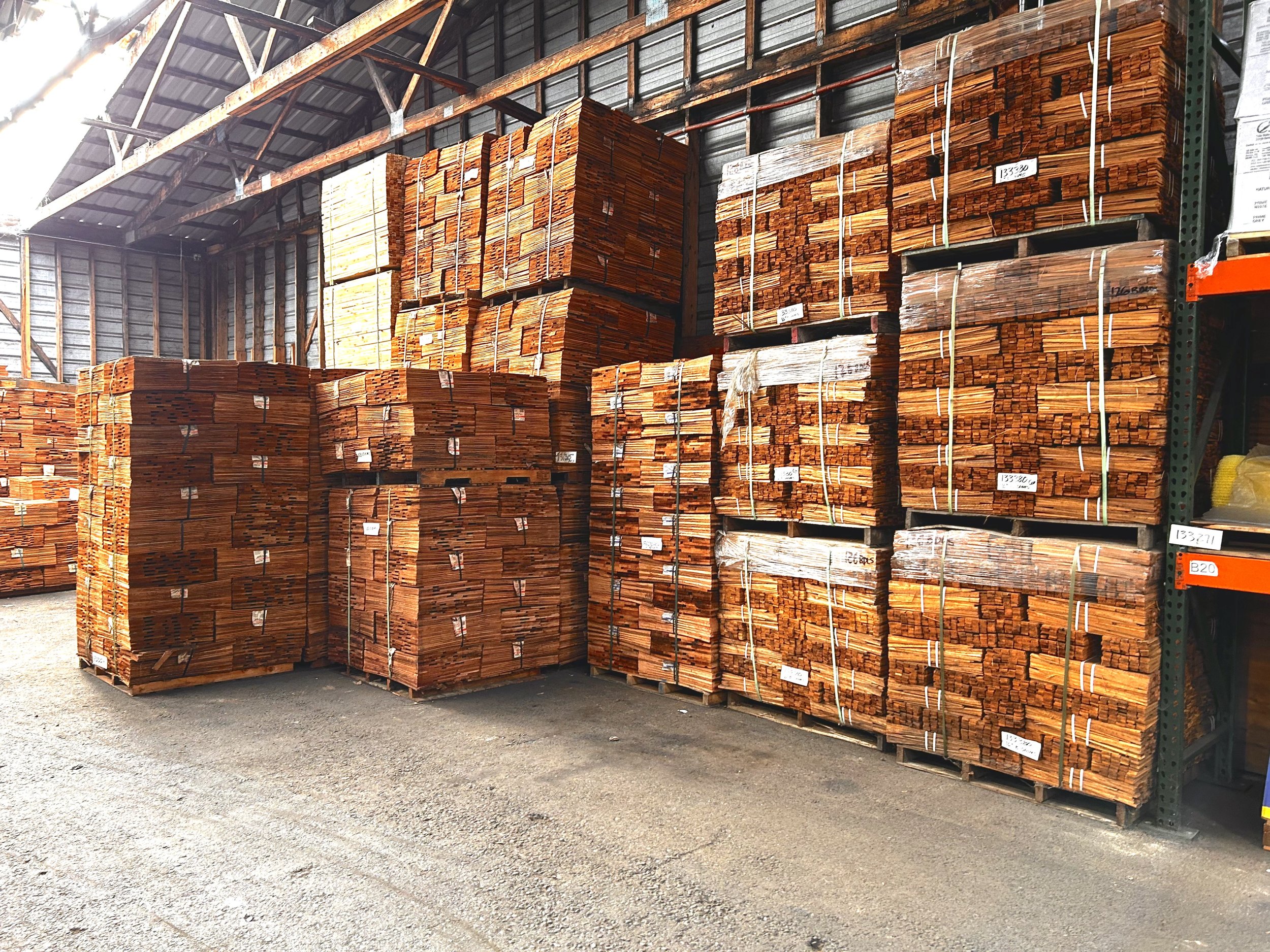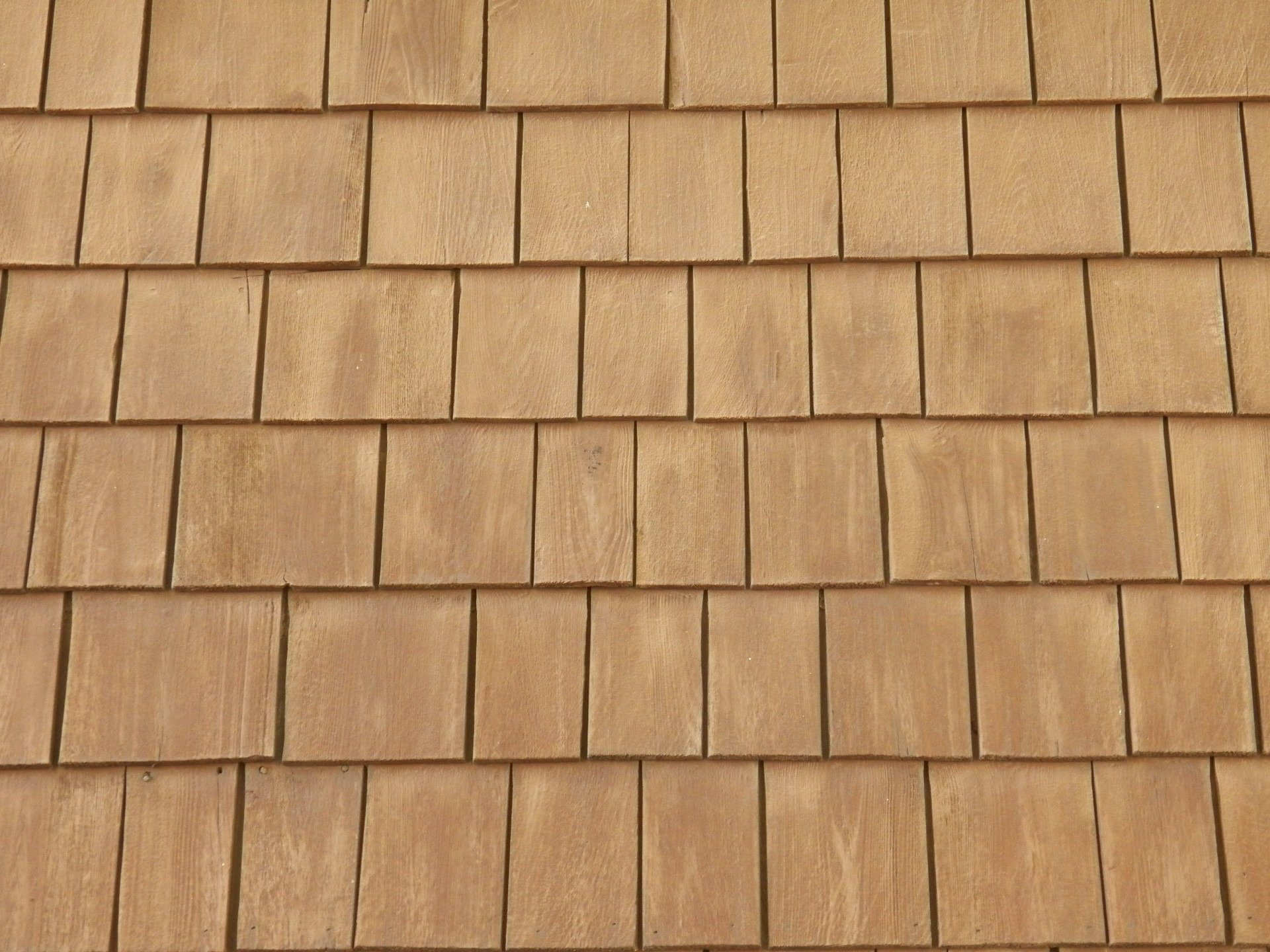
PRODUCT GUIDE
Western Red Cedar
Western Red Cedar shakes
Hand-split shakes lend a hearty, rustic appearance to both roofing and siding projects. Sometimes referred to as “re-sawn,” these shakes are sawn smooth on the back for easier installation.
Taper-sawn shakes offer a robust yet tailored appearance, straddling the line between shakes and shingles. Sawn both front and back with a distinctive circular pattern, these shakes are often the most durable option.
Sizes
Available lengths:
24”
18”
Custom
Available thickness:
Medium: ½” to ⅝”
Heavy: ¾”
Jumbo: 1” to 1 ¼”
Quantity
Shakes are usually sold by the bundle and require 5 bundles for every 100 square feet of coverage. Precise recommendations for exposure vary with roof slope and shake size. Typically, 24” shakes have a 10” exposure, while 18” shakes have a 7.5” exposure.
Grades
Hand-split shakes are typically sold as either “No. 1 Select” or “No. 1 Premium.”
No. 1 Select shakes allow for up to 20% of flat grain in their bundles.
No. 1 Premium shakes must be 100% vertical or edge grain.
Vertical grain offers a longer-lasting shake and a more refined appearance.
No. 1 taper-sawn shakes are always 100% vertical grain.
Precise grading rules are enforced by the Cedar Shake and Shingle Bureau, a 120-year-old organization dedicated to ensuring a high standard of quality within the industry.
What else to look for
Edge trimming (single or double). This saves installation time and gives a more uniform look to the finished roof.
Wood origin. This can affect the quality of wood fibers and the color spectrum for the wood.
Mill warranty. Some mills offer a 55-year warranty on their wood when properly installed.
Local code requirements. These dictate treatments (such as for fire) and installation specifications.
Western Red Cedar shingles
From roofs, to siding, to decorative gable ends, Western Red Cedar shingles are an extremely versatile building product that instantly adds value to any project.
Green shingles are freshly cut and sold in bundles. These can be installed and left to weather naturally, or stained to the color of your choice after installation. Western Red Cedar shingles have a thinner, more uniform appearance, excellent for sidewalls or roofs.
Grades
The Cedar Shake and Shingle Bureau’s standards for Western Red Cedar (green) shingles includes:
No. 1 (Blue label): These 100% vertical grain and made of heartwood. No. 1 shingles also have a minimum number of grains per inch, which ensures that the shingles are resilient to the elements for decades.
No. 2 (Red label): These have some flat grain, to show off the texture of the cedar.
No. 3 (Black label): These may be used as an undercourse for roofing.
No. 4 (Green label): These may only be used as a sidewall undercourse or a builder’s shim.
Sizes
The width of individual shingles will vary, but the thickness, length and shape will be relatively consistent.
The terms “5x” “Perfection” and “Royal” don’t refer to grade, but are industry standard terms referring to the length and thickness of the shingle.
Typically, green shingles are sold in contractor bundles, which are 4 bundles per 100 square feet at the standard exposure.
Accessories
Don’t forget about shingle hip and ridge for roofing applications
A cedar breather may be required or desirable for high-humidity applications
What else to look for
Circular-sawn vs. band-sawn: Circular sawn shingles tend to have a longer lifespan than band-sawn shingles. Both manufacturing techniques produce saw marks.
Edge trimming: All shingles are edge trimmed, at varying degrees of evenness. This has no effect on the shingle life, but may require extra work from the installer. For a more uniform installation, consider R&R shingles, below.
Tightness of grains: Very tight grains are ideal for the long life of shingles, but wider grains can be acceptable for undercourse material.
Quantity
Western Red Cedar (green) shingles are sold both by the bundle and in full-pallet quantities.
Western Red Cedar R&R shingles
Very popular in both midcentury design and traditionally shingled buildings, rebutted and rejointed (sometimes called re-squared) shingles provide the highest quality appearance.
We are the exclusive distributor of Pacific Coast R&R shingles, the top-of-the-line product in this category.
An R&R shingle starts with a premium green shingle, which is dried, its edges squared, and ends trimmed.
Options
Standard R&R: A circular-sawn shingle preserves the natural beauty of cedar while ensuring ease of installation.
Sanded R&R: After cutting to size, the mill sands shingles to reduce the kerf (marks) of the saw for a more even appearance.
Grooved: Also known as raked or combed — even sometimes referred to as the “raked shake” look — these mechanically created grooves were very popular for mid-century homes.
Primed: If you are planning to paint your shingles, especially a vibrant color, pre-priming shingles on all sides is essential. This priming ensures that the shingles have less tendency to warp under different moisture conditions.
Primed and grooved: This style simply combines the grooved and primed treatments, and is the most popular option for R&R shingles.
Grades
R&R shingles follow the same grading rules as green shingles.
No. 1 (Blue label): These 100% vertical grain and have a minimum number of grains per inch, which ensures that the shingles are resilient to the elements for decades.
No. 2 (Red label): These have some flat grain, to show off the texture of the cedar. They may be used as an undercourse, or for a gable end or sidewall when the builder wants to show off the flat grain of the cedar.
Compare cedar species and their applications
WESTERN RED CEDAR
The most popular species of wood used for shakes and shingles, a rich red-brown color throughout with a timeless appearance.
EASTERN WHITE CEDAR
Wonderful for sidewall installation, this species has a flat grain and a bright, clean appearance often seen in coastal homes.
ALASKAN YELLOW CEDAR
A dense wood known for its durability, it offers a clean and consistent appearance. It naturally ages to a beautiful silver.










